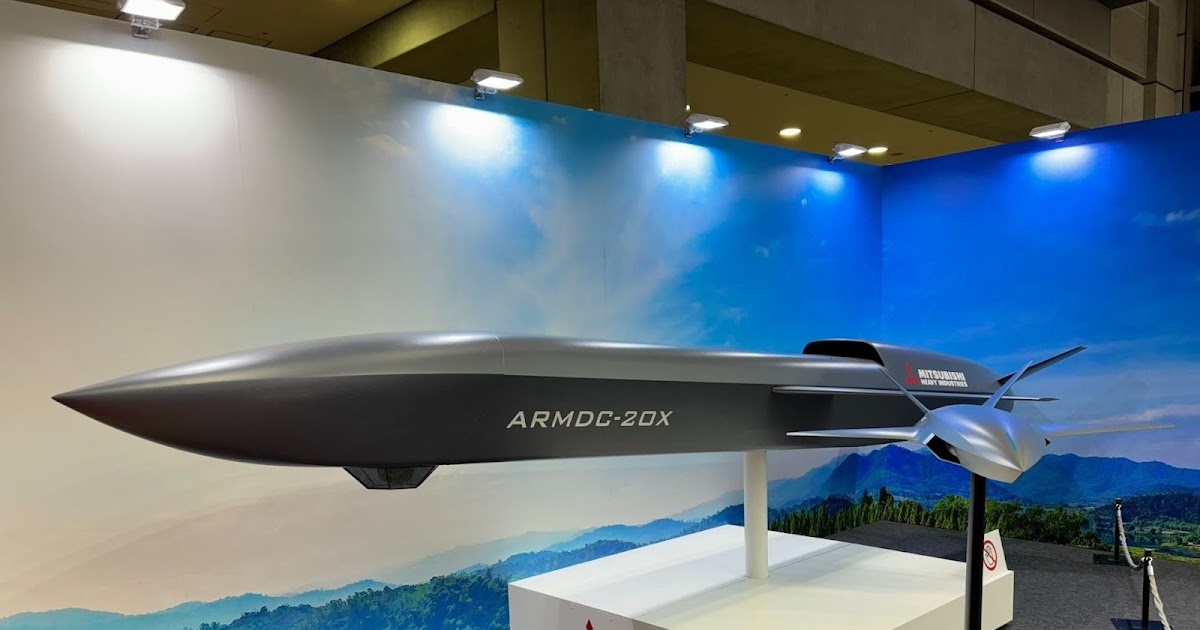Mitsubishi Unveils AI-Powered Combat Drones to Transform Japan’s Defense Strategy

Mitsubishi Heavy Industries (MHI) made a major splash at the International Aerospace Exhibition in Japan by unveiling two cutting-edge unmanned aerial vehicles (UAVs) powered by artificial intelligence (AI). This move is a key part of Japan’s broader push to upgrade its defense capabilities with advanced, AI-driven technology, especially as the country faces increasing regional security challenges.
At the exhibition, MHI revealed the two combat-support drones developed under contract with Japan’s Acquisition, Technology & Logistics Agency (ATLA). These UAVs are scheduled to undergo their first test flights in 2025, a critical milestone for Japan’s defense industry. The test flights will serve as a practical demonstration of the AI systems and autonomous combat capabilities embedded in these unmanned platforms, marking a bold new step for Japan’s military modernization efforts.
The two models unveiled were the ARMDC-20X, a six-meter-long stealth-enabled reconnaissance drone, and an unnamed ten-meter-long interceptor drone designed specifically for aerial combat. The ARMDC-20X is designed to gather intelligence and provide real-time battlefield data, operating alongside manned fighter jets. This drone can support mission planning and increase situational awareness, ensuring pilots have comprehensive information before engaging in hostile action.
The larger, ten-meter interceptor UAV is built with a more offensive role in mind. Capable of aerial combat, this drone can intercept and neutralize enemy aircraft or missiles, performing high-risk operations that would typically endanger human pilots. Both UAVs have been equipped with stealth technology, allowing them to operate covertly and avoid detection by enemy radar systems, a crucial feature in modern warfare where airspace is increasingly contested.
Mitsubishi’s focus on AI isn't just about making drones that fly autonomously; it’s about integrating these UAVs into broader, multi-domain battle strategies. The drones are expected to function as loyal wingmen for human pilots, working in close coordination to execute complex missions, from reconnaissance to intercept operations, without putting human lives at risk. AI will allow these drones to adapt in real-time to dynamic battlefield conditions, making split-second decisions to support the larger mission.
In addition to these combat UAVs, MHI also showcased several smaller drone models designed for logistical purposes. These include a single-rotor "small drone" optimized for tactical mobility and a 12-rotor "medium drone" built to carry heavy payloads. Both of these drones are currently undergoing operational trials, and MHI is preparing them for real-world deployment. The medium drone, in particular, has the potential to revolutionize supply chains in military operations, being able to transport equipment, ammunition, or medical supplies quickly and efficiently over difficult terrain.
The announcement and unveiling of these AI-powered UAVs come at a crucial time. Japan, amid rising regional tensions, is ramping up its defense spending and innovation. These AI drones represent a strategic shift in Japan’s defense posture, where automation and AI are seen as essential for handling future military challenges. As Japan aims to strengthen its deterrence capabilities, unmanned systems like these will play a central role in ensuring the country is well-prepared to defend itself in a rapidly changing geopolitical landscape.
Mitsubishi’s UAVs also underscore a broader trend within global defense industries: the rapid development and deployment of AI and unmanned technologies to modernize armed forces. With AI-powered decision-making, drones like the ARMDC-20X and the unnamed interceptor will not only complement human decision-makers but may eventually surpass them in executing precision missions without human intervention.
As Japan continues to innovate in defense, MHI’s drones represent a significant leap toward integrating AI into its future military strategies. With test flights scheduled for 2025, the world will be watching closely as Japan pushes the boundaries of AI-driven warfare, setting new standards for how unmanned systems can work in concert with human-operated technologies to ensure national security.


